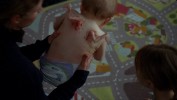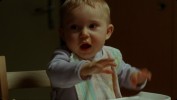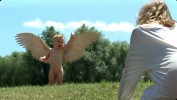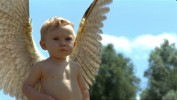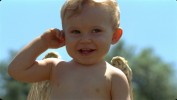Ricky
DIRECTOR : Francois Ozon
PRODUCTION : Eurowide, FOZ, BUF
VFX SUPERVISORS : Pierre Buffin / Mathilde Tollec / Geoffrey Niquet
VFX PRODUCER : François-Xavier Aubague

MAKING OF : Jérôme Pesnel
MUSIC : Mychael Danna - The winner is
NUMBER OF SHOTS : 126
Production notes
“A gritty working-class milieu straight out of a Dardenne brothers film grafted onto a bizarre dark-Disney tale about a baby who suddenly sprouts wings” - Screen International
Katie works long shifts at a chemical factory, while seven-year-old moppet Lisa is precociously self-sufficient and solemn. Lisa's dad having long since disappeared, mom and kid have grown into a close-knit team, but when Katie falls for charmer Paco, the pair's domestic setup is irrevocably altered. Lisa's sense of exclusion doubles when the cherubic Ricky appears and deepens yet further when it becomes apparent what a special baby this is...
Focused on the character of Ricky, BUF's work began as soon as François Ozon was writing the script. This early-collaboration enabled the director to understand how the VFX work required would influence the shooting of film and allowed BUF to research very early on the best way to achieve Ozon's vision of Ricky.
Ricky's wings are done entirely in CG based on practical wings created for the film. BUF's work was to animate and integrate the photorealistic wings to the baby's back. To obtain moves that felt real, the work was based on a wide variety of footage of real birds. When Ricky's wings are small, sparrows were used as references. As the wings grow larger, the main reference was an eagle. Additional visual effects work included the creation of lumps on Ricky's back, as well as location clean-up and set extensions.
For wide shots, the baby was created entirely in CG, which allowed for the greatest fluidity of movement as he flies. The development of the character movement involved many Animatics that allowed us to define the trajectory and rhythm of Ricky's movements. For close-ups on the character, what was most important was to let the acting shine, so the work was done from a live filmed plate of the baby.
In order to determine the best way to film the flying shots, we experimented with different techniques to fly the baby and have him execute the required moves. The limits of cables and harness led us to enhance some of these moves in post. BUF's principal challenge was to give a natural weight and energy to the baby as he flies and remove any sensation of unnatural movement or passivity caused by the cables and harness thus allowing the audience to feel the baby is controlling his own flight.




